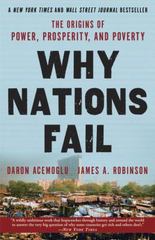QUESTION 21 Consider an oligopoly with 15 identical firms, and all firms produce a homogenous product. All firms choose how much to supply 250 - Ej =1,j =59/ - 10 simultaneously. The best response function of firm 5 is 95 = . In a Nash Equilibrium, 2 O Each firm produces 10 units of good Firm 5 produces 16 units of good O The total supply is equal to 225 O The total supply is equal to 240 QUESTION 22 Consider an oligopoly with 11 identical firms, and all firms produce a heterogenous product. All firms choose the price of their goods 120 + 2j= 1,j=2Pj simultaneously. The best response function of firm 2 is P2 = 20 In a Nash Eqilibrium, firm 2 sets a price equal to 10QUESTION 23 27 logging firms use a forest to collect timber. Each firm / must choose how many trees to cut, g; The benefit of cutting a tree is 1000 -5G per tree, where G is the total quantity of trees cut in the forest. The marginal cost of cutting a tree is 20. Firms do not face any fixed costs. What is the best response function for firm /? 980 - 1092 ogi= 10 196 - 2, =1.j = 19) ogi= 2 980 - gi 0 91= 20 196 - 92 10QUESTION 19 7 logging firms use a forest to collect timber. Each firm / must choose how many trees to cut, gf. The benefit of cutting a tree is 5000 - 5 G per tree, where G is the total quantity of trees cut in the forest. The total cost of cutting @ trees is 59, . What is the total number of trees cut in a Nash Equilibrium? 318.18 QUESTION 20 27 logging firms use a forest to collect timber. Each firm / must choose how many trees to cut, Of The benefit of cutting a tree is 1000 -5 G per tree, where G is the total quantity of trees cut in the forest. The marginal cost of cutting a tree is 20. Firms do not face any fixed costs. If every firm k, k = 2,3,4,..., 27 cuts 5 trees each, what is the number of trees that firm 1 cuts (assuming that firm 1 chooses the best response)? 85QUESTION 24 N(N > 1) logging firms use a forest to collect timber. Each firm /, / = 1,2,..., N must choose how many trees to cut, gf. The benefit of cutting a tree is A - BG per tree, where G is the total quantity of trees cut in the forest. The marginal cost of cutting a tree is C. Firms do not face any fixed costs. Which statement is TRUE? Socially optimal number of trees cut increases when the number of logging firms increases. O Socially optimal number of trees cut decreases when the number of logging firms increases. O Socially optimal number of trees cut does not change when the number of logging firms increases. O Socially optimal number of trees cut fist increases and then decreases when the number of logging firms increases. QUESTION 25 10 logging firms use a forest to collect timber. Each firm / must choose how many trees to cut, gf. The benefit of cutting a tree is 1200 -5 G per tree, where " is the total quantity of trees cut in the forest. The total cost of cutting @ trees is 97 . Firms do not face any fixed costs. What is the socially optimal quantity of trees cut? 21










